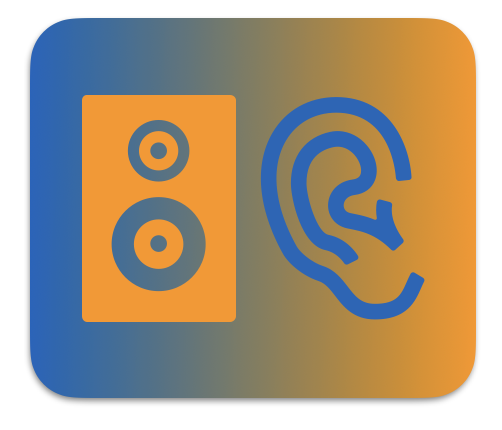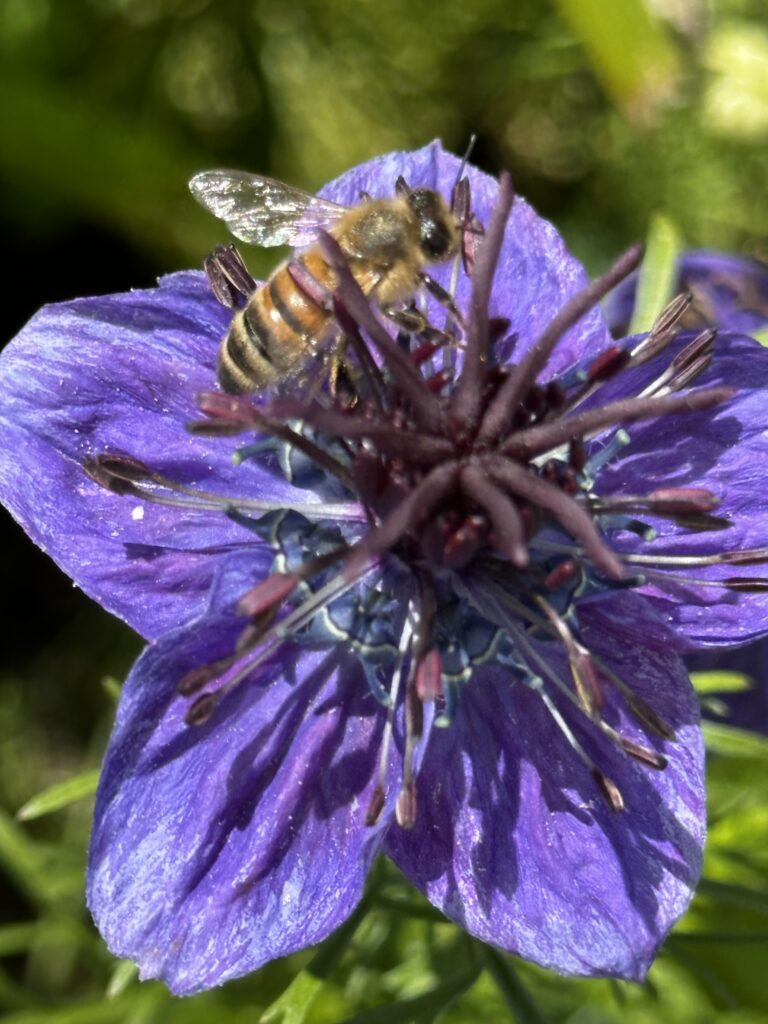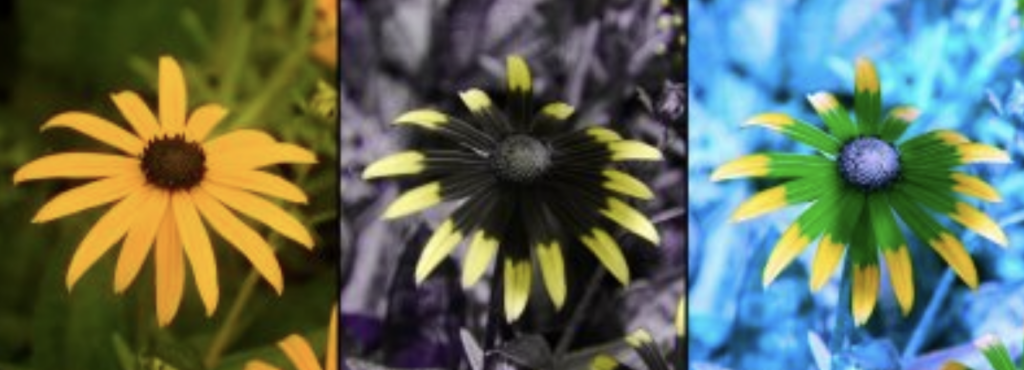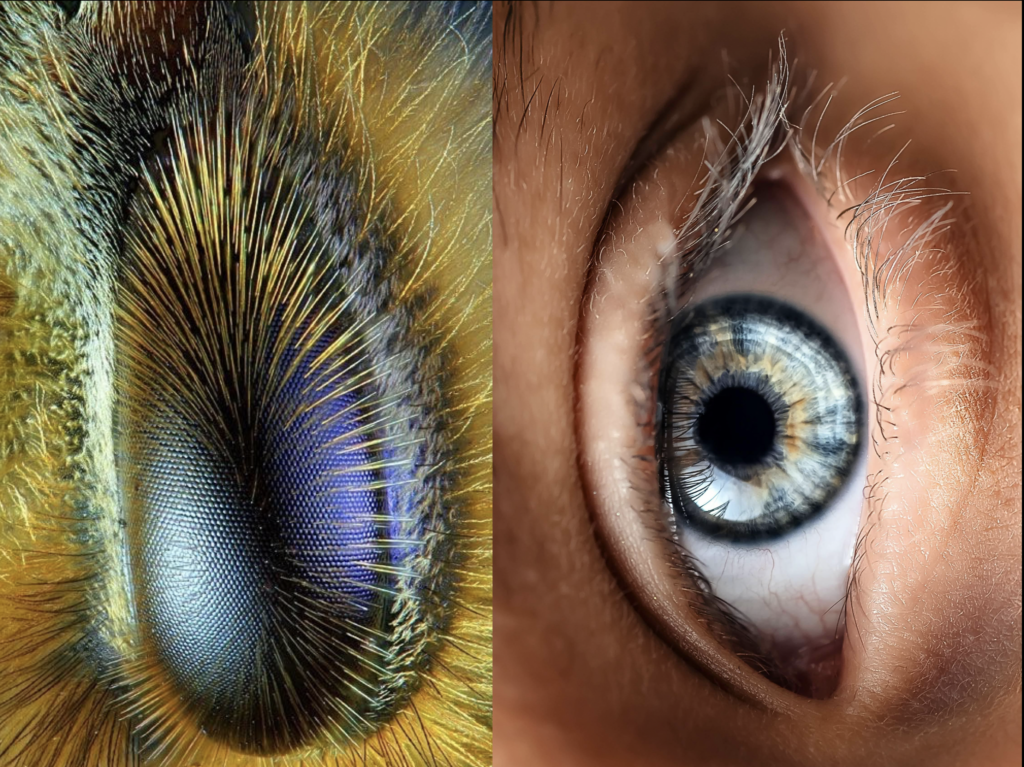text analysis: Bee’s vision or What You See Versus What the Bees See about flowers
Dans quelle mesure le(s) document(s) proposé(s) éclaire(nt)-t-il(s) le thème «De la plante sauvage à la plante domestiquée » du programme de SVT ?

Flowers look very different to insect pollinators, such as honey bees, compared to what we mammals see. As the photo on the left shows, bees have compound eyes.
How a bee sees patterns as a result of its compound eyes is wonderfully illustrated at Andy Giger’s B-Eye website.
Like humans, bees can perceive different colors. (This has been know for over 100 years.)
Unlike humans, however, bees can perceive ultraviolet (UV) light.
Thus, the pigments in flower petals that absorb UV light create patterns visible to bees, but that may be invisible to humans. (see photos below)
These patterns are sometimes referred to as “honey guides” or “nectar guides” that presumably serve to direct the pollinators toward the center of flowers.


Flowers in Ultraviolet is a fantastic website that illustrates this in dozens of flowers categorized by plant families. It was Thompson and co-researchers in 1972 that first published a connection between chemicals called flavonols and patterns on flower petals that may attract insect pollinators.
Plant flavonoids may be the UV-absorbing pigments mostly responsible for the patterns that attract insect pollinators as discussed by the scientists.
[…]
Flowers Use Several Strategies to Attract Pollinators
It’s clear that some plants have the petal equivalent to “landing lights” at airports to guide airborne pollinators such as bees to the flowers.


Plants also use nectaries and floral scents to attract pollinators. (Bees have odor receptors at the base of their antennae.)
Recent research has provided clues regarding how moths key into the scent of a flower, for example.
Bees apparently sometimes have memory lapses and, thus, use a combination of visual and chemical (volatiles) cues to locate flowers. (More on this subject can be found here.)
Triptych (left to right): Human vison, reflected UV, simulated bee vision:

To go further:

